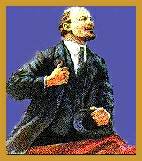|
PinkMonkey Online Study Guide-World History
12.2 The Course of the Russian Revolution
During the year 1917, two revolutions took place
in Russia. The February revolution of 1917 led to the defeat of
Czarism, and a republic was established in its place. However the
October Revolution of 1917 established the dictatorship of
the proletariat (i.e. the laboring class).
The February revolution of 1917 began with
the bread riots on February 23. This was followed by a general industrial
strike on February 25, in Petrograd. The entire Petrograd garrison
and the police, joined the revolution by February 27, and by the
following day, Petrograd fell into the hands of the revolutionaries.
The February revolution was the spontaneous outbreak
of a large number of workers and peasants. By February 27, two organizations
came into existence namely the Provisional Committee of the Duma
and the Provisional Executive Committee of the Petrograd Soviet
of Workers’ Deputies. The latter which represented factory workers,
social revolutionaries, Mensheviks and Bolsheviks was to guide the
revolution.
The Czarist ministers were arrested on February
28, 1917 and Commissars were appointed in their place by the Provisional
Committee of the Duma. The mutiny of the troops occurred on March
1, 1917. Though the Czar Nicholas II was forced to abdicate on March
2, 1917, all the members of the royal family remained under house
arrest, until they were shot dead on July 16, 1918. This brought
the Czarism in Russia to an end.
A provisional coalition government came
into existence by March 3, 1917, under the premiership of Prince
George Lvov. The Allied powers soon recognized the provisional
government; it was considered the ’legal successor’ to the Czarist
government.
However, an ever-increasing number of workers and
soldiers came to recognize the Soviets of Workers’ and Soldiers.
Thus a Dual Power was established by the revolution, namely
the Provisional Government and the government of the Soviets
of Workers’ and Soldiers’ Deputies. The latter was soon established
in all cities, towns and districts. The first All -Russian Congress
was announced by the end of March, 1917.

Exhibit 12.3
The leader of the October Revolution, Lenin
The brilliant leadership and the moving spirit
of Lenin was responsible for the October Revolution in Russia. Under
his leadership, the Bolsheviks criticized and exposed the shortcomings
of the Provisional Government. A huge armed demonstration was held
against the Provisional Government in Petrograd, on July 17, 1917.
Prime Minister George Lvov was forced to resign. He was succeeded
by Alexander Kerensky as the new Prime Minister.
|